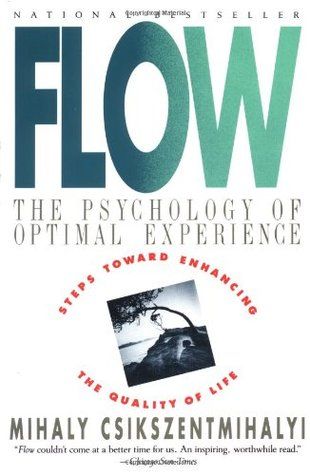Flow: The Psychology Of Optimal Experience – Mihaly Csikszentmihalyi

How to be productive and happy at the same time!
Essential Steps To Experience Flow
- Set an overall goal, and as many subgoals as are realistically feasible.
- To find ways of measuring progress in terms of the goals chosen.
- To keep concentrating on what one is doing and to keep making finer and finer distinctions in the challenges involved in the activity.
- To develop the skills necessary to interact with the opportunities available.
- To keep raising the stakes if the activity becomes boring.
Why Is Loneliness A Negative Experience?
- Keeping order in mind from within is very difficult.
- A person needs external goals, stimulation, and feedback to keep attention directed.
- When external input is lacking, attention begins to wander and thoughts become chaotic.
Why Some People Gain Strength From Stress?
- Unselfconscious self assurance: the recognition that one’s goals may have to be subordinated to a greater entity.
- Focusing attention on the world: Concentrate on the internal disorder: but by paying attention to what is happening around oneself instead, the destructive effects of stress are lessened.
Discovery Of New Solutions
a. Focus attention on the obstacles to achieving one’s goals and then move them out of the way, thereby restoring harmony in consciousness.
b. To discover whether alternative goals may be more appropriate and thus find different solutions possible.
Happiness Index: Material Resources Vs Investment In Oneself?
These questions were answered with the Experience Sampling Method (ESM)
When people are pursuing leisure activities that are expensive, such as power boating, driving, or watching television, they are significantly less happy.
People are happiest when they are talking to one another, when they garden, knit, or are involved in a hobby.
Achieving Flow: 8 Different Stages Of Yoga
- Yama: one must achieve restraint from acts and thoughts that might harm others.
- Niyama: obedience, follow routines in cleanliness, study and obedience to God. Help channel attention into predictable patterns and hence make attention easier to control.
- Asana: ways of sitting and holding postures for long periods without succumbing to strain or fatigue.
- Pranayama: breath control, aims to relax the body and stabilizes the rhythm of breathing.
- Pratyahara: Withdrawal, learning to withdraw attention from outward objects by directing the input of the senses.
- Dharana : holding on, is the ability to concentrate for long periods on a single stimulus and thus is the mirror image of the earlier stage of pratyahara.
- Dhyana: one learns to forget the self in uninterrupted concentration that no longer needs the external stimuli of the preceding phase.
- Samadhi : self collectedness, when the meditator and the object of meditation become as one.

